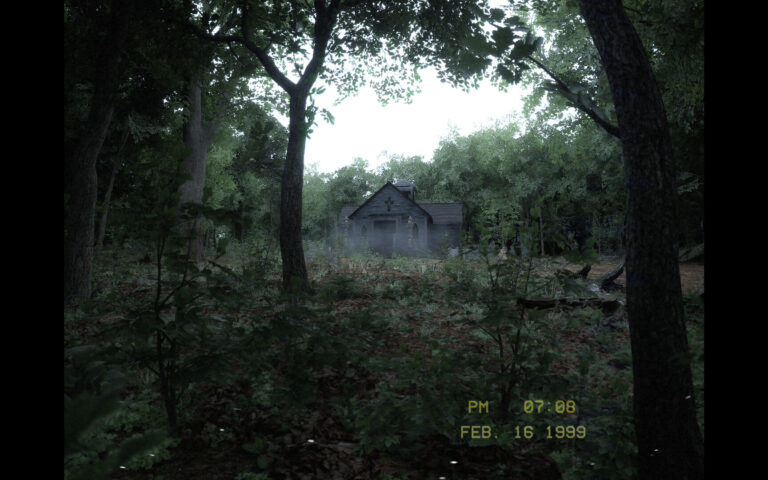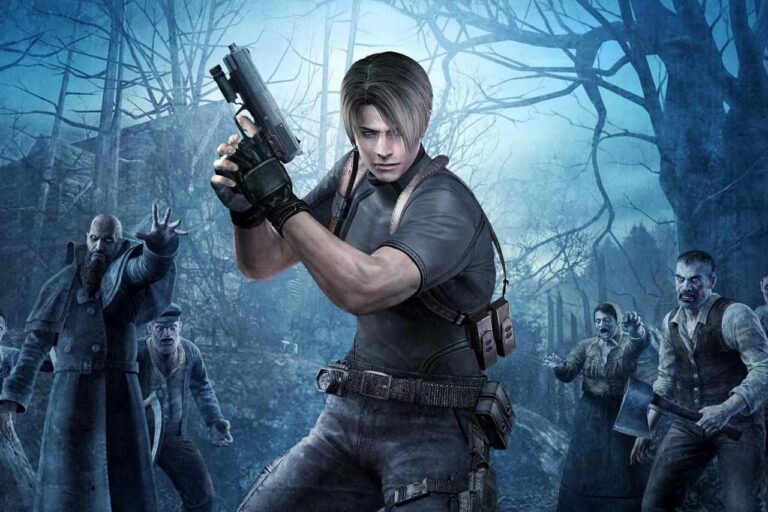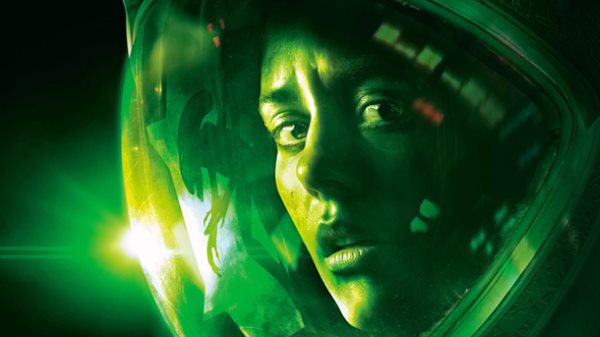
The original Alien movie is one of the most finely crafted films ever committed to cinema. It was a triumph of technical production that forever changed people’s perception as to what both horror and science fiction could achieve. Alien began as a small horror film in 1979 that gestated inside pop-culture, then it violently tore its way out into a massive franchise. While I was born a decade after the original movie came out, I have been an Alien fan for as long as I can remember and it feels like I have been there since the beginning. From reading countless Dark Horse Alien comics to staying out way too late playing Capcom’s Aliens vs. Predator arcade machine with friends, I have experienced a plethora of the very best and worst of the franchise has to offer. In recent years however, there has been so much awful Alien media to the point that I was not even sure I considered myself a fan anymore. So when SEGA and Creative Assembly announced they were working on a new survival horror game called Alien: Isolation that was focused on being true to the original movie, I was convinced they could not successfully pull off what was promised. However, thanks to unwavering respect paid to the original movie, a committal to being a true survival horror game, and masterful blending of these two aspects together, it is safe to say the crow is all mine.
The overwhelming majority of Alien comics, spin offs, and video games have almost universally followed the tone and visuals not of the first movie but of James Cameron’s follow up, Aliens. Which is not really surprising considering Aliens is the far more popular and accessible of the two movies. It is also because nearly every video game that has ever brandished the Alien name has had a focus on action gameplay. Aliens remolded the monster from the first movie into a hive creature that attacked in mass numbers and won its battles the same way a tidal wave might engulf its victims. Alien: Isolation however is completely uninterested in appealing to the aesthetics of James Cameron’s film and is focused entirely on recreating the nail biting tension of the Ridley Scott original.
While the plot of Alien is very much that of a B-movie, the film actually littered with iconography that taps into deeper psychology; it affects people on a very human level. It was about fears of violation, birth trauma, and the unsettling aspects of human reproduction. Seriously, if you were to make a drinking game of every time there was a phallic symbol or imagery that evokes vaginal orifices in the movie, you would probably end up with alcohol poisoning. The developers at Creative Assembly knew this and incorporated it into their game. All of the womb-like corridors and visuals that permeated the Nostromo in the movie are in full uncompromised detail in Alien: Isolation.
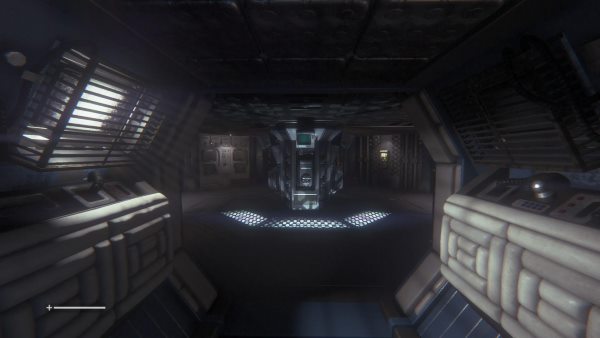
Not only does Alien: Isolation recreate the tone of the original brilliantly, it also does so without wholesale ripping off the sets. Isolation takes place on a space station called the Sevastopol that is very much inspired by the Nostomo spacecraft from the movie, but they do just enough to make it feel distinct. While the Nostromo housed only a small crew of seven, the Sevastopol is a home to a large community and as a result is a much more varied and expansive environment. There’s a lot of loving detail in the Sevastopol though that really makes the game feel like it takes place in the same time period as the first movie.
In order to truly recreate the feel of Alien, the developers of Isolation had to recreate the technology that was present in the movie. Alien came out at the dawn of what felt like realistic computing as a popular curiosity in science fiction. All of the terminal CRT monitors and punch card-like workstations are present in Isolation in all of their late 70’s technology glory. It is really important to note the attention to detail in Isolation‘s committal to recreating the 70’s scifi aesthetics of the original movie as it is an integral part as to why this game feels like the first true successor to the film.
To accurately recreate the mood of Alien, the technology of Isolation had to stay forever locked in time with the 70’s scifi vision of the future. That may sound like it goes without saying, but it is pretty fair to guess that the temptation to “update” the technology present in the movie was surely there. Consider this: even when Alien‘s own director Ridley Scott released his pseudo prequel Prometheus, the technology and set design in the movie looked like they were out of a modern Star Trek movie more so than anything from the film he directed 30 years prior. Perhaps that was an intentional decision on Scott’s part for Prometheus, but the fact remains that Alien: Isolation remained devoted to Alien and nothing else in the franchise that followed. There is not a higher compliment I can think of to give Creative Assembly other than the fact that they created a more faithful Alien follow up than Ridley Scott did.
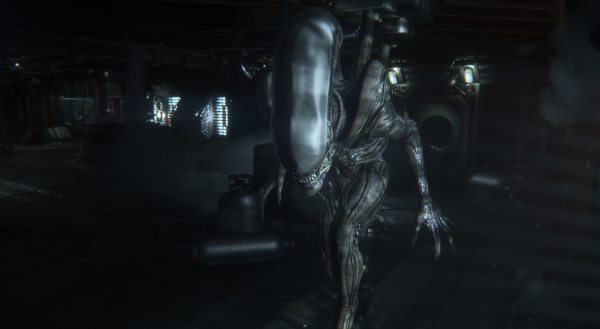
Though the art direction in Alien Isolation is not the sole factor in what makes the game feel so much like the first movie. It is also the attention to detail in how the player interacts with the alien creature itself. As I mentioned earlier, previous videogames the franchise follow the hive/swarm behavior of the creatures from James Cameron’s Aliens. Arguably the most popular game in the franchise is 1999’s Aliens vs. Predator by Rebellion, and it exemplifies what I’m referring to with regards to the difference in the creature’s behavior. In that game, much like Cameron’s film, no single alien was frightening. It was the sea of aliens swarming the player from every direction that made players feel disempowered. However, even with the overwhelming numbers, you were never truly helpless in those situations because you could just mow down the mass of aliens with your pulse rifle. The following statement is sure to upset some fans, but in recent times I’ve come to believe that Cameron’s film dumbed down a lot of what the alien itself once was. The alien in the first movie had a distinct otherworldly feel to its presence, you could almost feel that it was enjoying terrorizing the crew of the Nostromo. Thanks to H.R. Giger’s design, it was simultaneously repulsive but also strangely sexualized. In other words, it felt like something truly… alien. Then Aliens came along and it turns out the species is just like weird-bug-things.
Having played through Alien: Isolation, I get the impression that the folks over at the Creative Assembly agree with my previous assertion to a degree. The creature you face off with in this game is not an enemy type, a boss, a rival, or a stepping stone; it’s an adversary that’s at the top of the food chain. All throughout the game you are consistently reminded that nothing on the Sevastopol is on the same level as the alien. Sure, the human survivors and “Working Joe” androids pose serious threats, but nothing like the terrifying beast that’s only ever just an earshot away.
Unlike the aliens in previous games in the franchise, guns and weapons will not harm this creature. You can’t kill it, and it’s likely on the higher difficulties that you are just going to make it angry if you try to hit it with a flamethrower. To go along with the physical intimidation, after nearly 35 years of alien media, that subtle disturbing sexualized nature to the alien has finally returned. The first time I ever got a good look at it, the alien sensually unfolded itself from an above air duct – it was quite unnerving. After consuming years of alien media, this was the first time the creature felt just like the one in the first movie, and that is a greater accomplishment than I could have ever imagined.

Faithfulness to the original Alien is only part of what makes Alien Isolation a fantastic game. Regardless of the fact that it is part of a film franchise, Isolation is a true survival horror game in every sense. Horror games are supposed to be all about disempowerment and making the player feel afraid, and this game is probably the best example of that I have experienced from a AAA studio in many years. As mentioned earlier, there is no way for you to kill the alien with weapons and the best you can hope for it to be scared off for a moment. It harkens back to games like Clock Tower and Haunting Ground with the cat and mouse style of gameplay, but it also improves upon the formula as well.
The alien’s artificial intelligence really helps the monster feel more dynamic and beast-like than any sort of “stalker enemy” in the aforementioned games. The alien has no sort of fixed patrol patterns that it adheres to, so you can’t just hide in the shadows and map out exactly what it is going to do in an environment. Instead the alien simply just reacts to sound, and not just the sound the player makes. In one instance I found myself cornered by three armed survivors, they ordered me to come out from where I was hiding, and when I did one of them began firing at me. Moments after the first shot was fired, the alien came crashing down from the ceiling and tore apart my assailants. It was a shocking reminder that nothing is on equal footing with this monster.
Everything about the level design and gameplay in Alien: Isolation was like a throwback to old survival horror classics from the late 9o’s and early 00’s. The Sevastopol has a layout very similar to that of the Arklay Mansion in the original Resident Evil. That is to say it is divided up into sections and you often will come to a door or that you won’t be able to open up ’til much later due to not having the right equipment yet. You even learn much of the details of the story and station’s history through documents and audio logs; it really helps build on the sense that the Sevastopol was once a thriving community. There’s backtracking, resource management, and harsh penalties for not playing intelligently. Some critics have lobbied complaints at the game contains too much antiquated design, but I disagree. There is nothing antiquated about the fact that the game will revert back to a save point if you die. In the 26 hours I spent with the game, there was not a single instance where I thought the game was being unfair, if I died it was my fault. Alien: Isolation follows the Dark Souls school of design where it is tough but fair, and it is totally uninterested in holding the player’s hand. That methodology of game design may not appeal to everyone, but that hardly means it’s flawed.
The thing that was so mesmerizing about Alien Isolation was its ability to blend smart gameplay mechanics with the established lore of the Alien universe. All of your equipment is handcrafted by the protagonist Amanda, and you have to gather materials and create makeshift trinkets, items, and weapons. It reminds me of the motion tracker that the crew of the Nostromo had to jerry-rig together in the original film. There’s a wonderful degree of cohesion between the gameplay and the narrative. Neither one was compromised in favor of the other, and when you’re dealing with a franchise that came from film, that is an extraordinary feat.
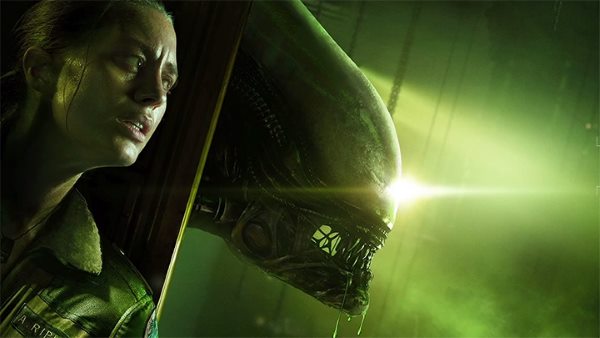
If I were to summarize up my feelings on Alien Isolation as a whole, it would be an immense amount of gratitude towards everyone that helped create it. I grew up with the Alien franchise, and for nearly a decade now I have felt as though slowly but surely I had lost all previous passion for it. Then this game came along and reminded me why I fell in love with Alien in the first place. The Creative Assembly have not only created an exceptional survival horror game, but quite literally one of the best pieces of Alien media since the original movie. Alien Isolation is unclouded by compromise in the developer’s vision, remorse for the player, or delusions of mediocrity; and I adore it.

